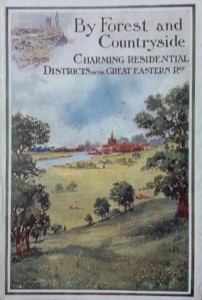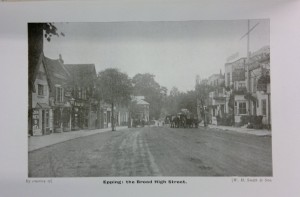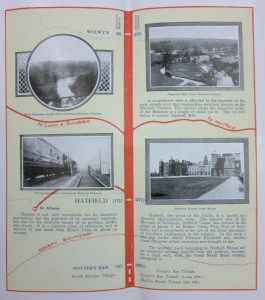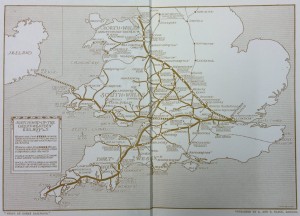I’ve recently been away on holiday and when I returned to my morning commute to the University Library, it struck me how much a part of modern life the rail commute is to many. From the familiarity of knowing exactly where best to stand on the platform to quickly grab your favourite seat, to seeing the same blank faces every morning. Of course the railway commute is not a new phenomenon at all. The Tower Collection contains a varied range of rail guides dating from before the First World War. These include guides to housing along the routes of popular commuter lines, to tourist booklets advertising popular attractions accessible by rail.
The growth of urban living and commuting during the early 20th century went hand in hand with the railways. In the first decades of the 20th Century, Cambridge was located on the Great Eastern Railway network, which fanned out across East Anglia from London Liverpool Street station (todays ‘Greater Anglia’ services run on essentially the same network). One particularly interesting book in the Tower collection is By Forest and Countryside, a guide to “charming residential districts on the Great Eastern Railway”. This was published by the Great Eastern for prospective London commuters in order to find the best place to live within commuting distance of the city.To take the modern commuter town of Bishops Stortford in Hertfordshire as an example, there were forty trains per day available to and from London in 1911. Season tickets cost twenty two pounds for first class or fifteen pounds and four shillings if travelling third class. Many of the locations are described as charming rural idylls before later urban development and much larger population growth. Harlow in Essex is described as an “old world town … and many delightfully old fashioned houses with beautiful gardens may be seen in the direction of Mulberry Green.” Today the original Harlow is located next to the much larger new town built after the Second World War, with its large shopping centre and many roundabouts. However in 1911 commuter development was already well under way,
“There are probably few other London suburbs that can boast a growth so rapid and vigorous as Ilford. A little more than ten years ago it was a comparatively small place; today equipped with all kinds of modern conveniences, owning its own electric light and tramways …”
Another book of interest is On either side from the carriage window, a detailed guide to the route of the East Coast mainline from London Kings Cross to Edinburgh Waverley. Aimed more at the casual traveller rather than the commuter, this interesting guide features a route map of the line along with details of places of interest along the route and of link lines and connections. As today, the East Coast main line was already one of the busiest rail routes in Britain with passengers from London able to travel to Yorkshire, the North East and Scotland within the space of a day. Speed was one of the primary concerns of the east coast railway companies who were in fierce competition with the rival West Coast main line from London Euston to Glasgow.
“The East Coast route between London and Edinburgh is the shortest and quickest. [It] has a well merited reputation for punctuality and no effort is spared to maintain this both as regards to the expresses from London (Kings Cross) and Edinburgh (Waverley) and vice versa.”
The Tower collection also contains literature about many other independent railways including the Great Western Railway, London and North Western and Great Northern along with a large collection of material produced by the North Eastern Railway. Not all authors were as pleased about the spread of the commuter belt as the major railway companies were. Gordon Home, author of a guide to the Great Western Railway bemoans the growing urban sprawl of London before the trains steam into the rural beauty of the Home Counties and Cotswolds.
“Like all the other railways out of London, there is nothing worth commenting on for the first few miles, beyond regretting that English people have been and still are, foolish enough to allow their great capital to be surrounded by a vast waste of badly designed and poorly built houses, which have spread over the pleasant country traversed by the railway when it was first constructed.”
I wonder what Gordon Home would think of much of Britain if he saw it today?
Row, Prescott and Anderson, Henry, By forest and countryside: a guide to the residential localities on the Great Eastern Railway, Classmark 1913.7.3218
East Coast Railways, On either side, Classmark 1918.10.144(53)
Home, Gordon, The Great Western Railway, Classmark 1913.7.2421

![5999138315_cbd4798478_b[1] Image of steam express train.](https://towerproject-blog.lib.cam.ac.uk/wp-content/uploads/2012/05/5999138315_cbd4798478_b1-300x183.jpg)



